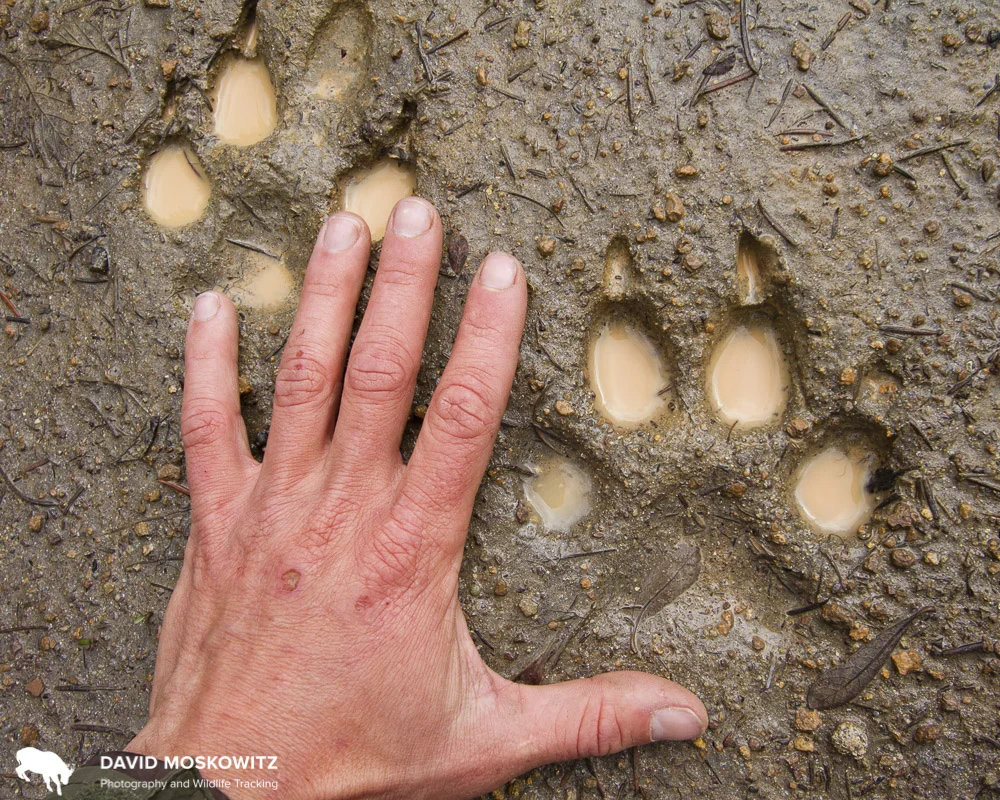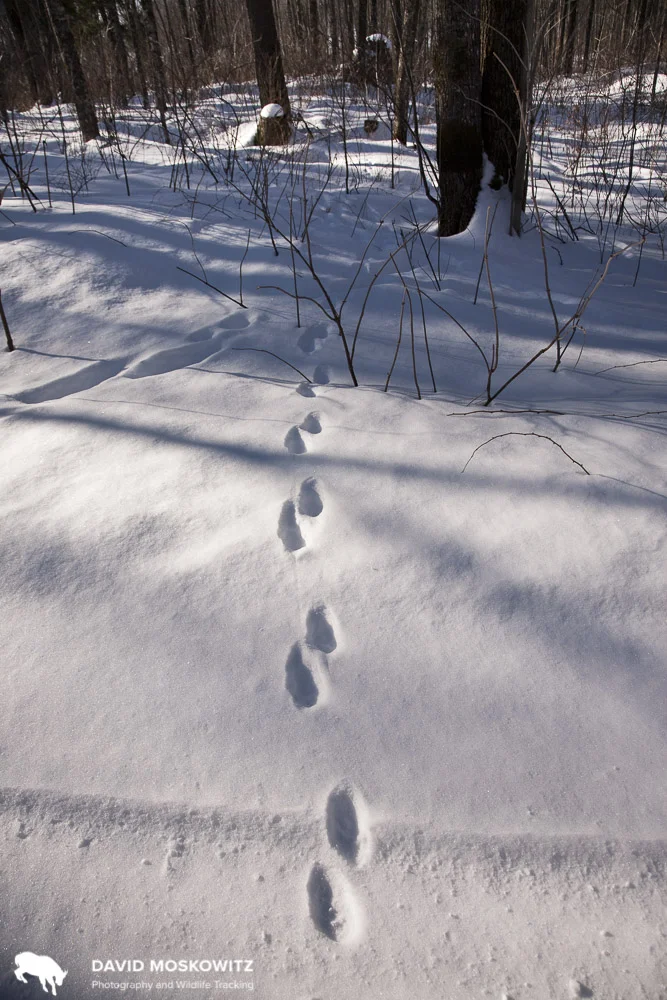Wildlife Tracking and other Non-Invasive Research Methods
Designed to detect and study wildlife without needing to actually handle or even observe directly, non-invasive research methods provide safe, cost effective, and accessible methods to answer many contemporary wildlife research and management questions. They also provide some of the most effective and engaging field-based educational experience for training in wildlife biology and ecological concepts. David works primarily with three categories of field methods: wildlife tracking, remote camera traps, and genetic sample collection.
Wildlife Tracking
Found in the Traditional Ecological Knowledge of many cultures around the world, interpreting the indirect evidence (tracks and signs) left behind by wildlife continues to be a fundamental field skill in the modern fields of wildlife research and management, hunting, and environmental education.
Remote Camera Traps
Modern technology has allowed us to use another field skill with a very long history, wildlife trapping, to detect and study wildlife without directly interacting with or harming wildlife. Much like traditional trapping methods designed to capture the actual animal (for fur, meat, or nuisance animal removal) remote camera traps are designed to capture images or video footage of wildlife using either naturally occurring or strategically placed attractants or predicated travel corridors. Camera trap design depends on the target species, landscape, time frame, and often a number of other management considerations.
Genetic Sample Collection
Collection of scats and fur samples in the field for genetic analysis out of the field has become a standard method for a variety of research questions including species identification, home range size, and population dynamics. Samples are collected from naturally deposited material such as scats and fur found in beds and tracks, or through artificial collection methods, mainly as hair snagging devises. Once out of the field these methods are based on cutting edge DNA analysis but in the field, methods are once again typically adaptations of traditional tracking and trapping methods.
Tracks of a member of one of Washington State’s wolf packs. Besides identification, tracks can be used to help determine home range, habitat use, and numbers of animals in a group.
Trail of a fisher in the North Woods of Wisconsin. Many studies which rely on wildlife tracking depend on snow cover for creating consistent detection probabilities.


